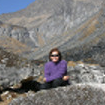Subduction and Exhumation of the Lithosphere: The Contribution of Structural Geology, Petrology and Geochronology
A special issue of Geosciences (ISSN 2076-3263). This special issue belongs to the section "Structural Geology and Tectonics".
Deadline for manuscript submissions: closed (20 September 2020) | Viewed by 17466
Special Issue Editors
Interests: tectonics; structural geology; shear zone; fluids and deformation; shear zone and mineralizations; veins, petrochronology; Himalaya; Variscan belt; northern Apennines
Special Issues, Collections and Topics in MDPI journals
Interests: structural geology; tectonics; orogenic belts; regional geology; shear zones; petrochronology; metamorphic petrology; Himalaya; Southern European Variscan belt
Interests: LA-ICP-MS geochronology; metamorphic petrology; magmatic petrology; tectonics
Special Issues, Collections and Topics in MDPI journals
Special Issue Information
Dear colleagues,
Deformed rocks, showing the overprinting of several tectonic and metamorphic episodes, commonly record different stages of the subduction and exhumation of the lithosphere. Such rocks are frequently exposed in crystalline basement complexes and carry fundamental insights on processes and their rates, acting during the evolution of the Lithosphere. Starting from the pioneering studies carried out on mountain belts (e.g., Alps, Scottish Highlands, and Himalaya), different approaches and techniques were developed to decipher and constrain this complex tectono-metamorphic history.
Presently, the achieved progress and knowledge stress the fundamental role played by a multidisciplinary approach for the study of basement rocks.
Detailed structural–geological field mapping, integrated with meso- and microstructural investigations, petrofabric analysis, petrochronology, and petrologic modeling are fundamental tools to infer helpful information on the pressure (P)–temperature (T)–deformation (D)–composition of the system (X)–time (t)–fluid activity (a) path of crystalline rocks. All this information is fundamental for the building up of tectonic models.
In this Special Volume of Geosciences, contributions dealing with structural–geological mapping, microstructural analyses, metamorphic petrology, geochronology, and thermochronology concerning basement rocks are welcome.
Prof. Dr. Chiara Montomoli
Dr. Salvatore Iaccarino
Dr. Antonio Langone
Guest Editors
Manuscript Submission Information
Manuscripts should be submitted online at www.mdpi.com by registering and logging in to this website. Once you are registered, click here to go to the submission form. Manuscripts can be submitted until the deadline. All submissions that pass pre-check are peer-reviewed. Accepted papers will be published continuously in the journal (as soon as accepted) and will be listed together on the special issue website. Research articles, review articles as well as short communications are invited. For planned papers, a title and short abstract (about 100 words) can be sent to the Editorial Office for announcement on this website.
Submitted manuscripts should not have been published previously, nor be under consideration for publication elsewhere (except conference proceedings papers). All manuscripts are thoroughly refereed through a single-blind peer-review process. A guide for authors and other relevant information for submission of manuscripts is available on the Instructions for Authors page. Geosciences is an international peer-reviewed open access monthly journal published by MDPI.
Please visit the Instructions for Authors page before submitting a manuscript. The Article Processing Charge (APC) for publication in this open access journal is 1800 CHF (Swiss Francs). Submitted papers should be well formatted and use good English. Authors may use MDPI's English editing service prior to publication or during author revisions.
Keywords
- tectonics
- microstructures
- metamorphic rocks
- geochronology and thermochronology
- P–T–D–X–t path







